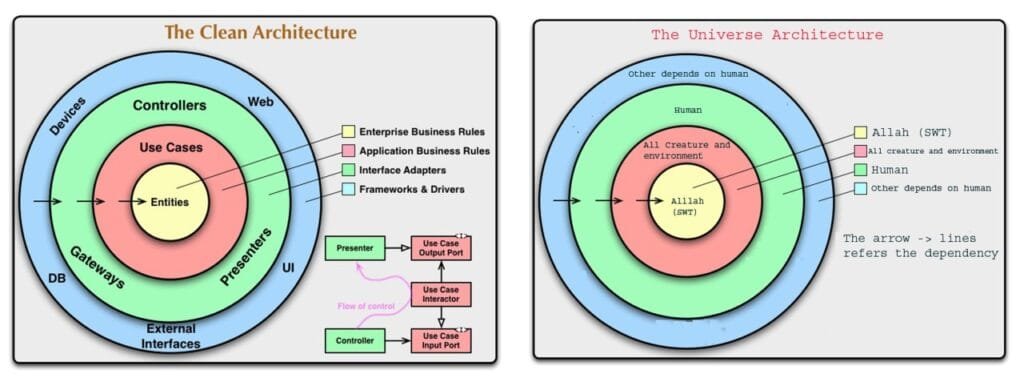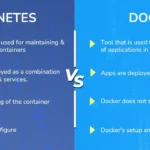Clean architecture is a framework for designing software systems that promote maintainability, scalability, and clear boundaries between components. This approach prioritizes separating the business logic from external details, ensuring that the core application remains unaffected by changes in technology, user interfaces, or frameworks. In this article, we will explore the principles, benefits, and practical implementation of it.
What Is Clean Architecture?
It was introduced by Robert C. Martin (Uncle Bob) and is an approach to software design that emphasizes separation of concerns. The key idea is to isolate high-level policies or business rules from lower-level implementation details. These details could be database interactions, user interface changes, or external dependencies. By creating distinct layers, it minimizes the risk of cascading changes and promotes a long-term, flexible solution.
At its core, clean architecture centers around independence. This design ensures that:
- Frameworks and libraries are replaceable without impacting core functionalities.
- Business logic remains technology-agnostic.
- Tests are easier to implement, focusing on core behaviors rather than external dependencies.
Key Principles
Several principles define clean architecture’s effectiveness. They include:
- Independence from frameworks: The core remains independent of external libraries.
- Testability: The architecture fosters ease of testing.
- Clear separation of concerns: Distinct responsibilities reduce the likelihood of errors during development.
- Dependency inversion: Lower-level components depend on high-level abstractions.
The Layered Approach in Clean Architecture
A hallmark feature of clean architecture is its use of layers. These layers emphasize specific roles and are arranged concentrically.
Layers
- Entities: At the core, these are business objects or rules, unaffected by external changes.
- Use Cases: Encapsulate application-specific business rules, bridging entities, and external layers.
- Interface Adapters: Handle transformations like mapping between the core rules and external systems such as databases or APIs.
- Frameworks and Drivers: External details such as tools and database connections sit at the outermost layer.
Dependency Rule:
All dependencies point inward toward the high-level rules. This ensures that lower-level changes, such as migrating to a new database, do not disrupt the central application logic.
Benefits of Implementing Architecture
Adopting clean architecture provides substantial advantages:
- Enhanced Maintainability: Clearly defined boundaries make modifications simpler.
- Scalability: Independent modules allow incremental system expansion.
- Testability: Core logic testing is easier without external dependencies.
- Technology Flexibility: Freedom to change frameworks without rewriting business logic.
- Clear Codebase: Clean, structured code boosts developer collaboration and onboarding.
How to Apply Clean Architecture in Practice
Developers implementing clean architecture should focus on a systematic process:
Steps to Adopt Clean Architecture:
- Define your business entities as the application’s unchanging core.
- Identify the key use cases encapsulating the business rules.
- Build interface adapters to convert data for input/output communication.
- Write or integrate frameworks to support tools like databases or APIs at the outermost layer.
Common Misconceptions About Clean Architecture
While clean architecture is highly effective, misconceptions exist:
- “It is only for large applications”: Clean architecture scales to projects of all sizes.
- “Adopting it means starting from scratch”: Existing codebases can gradually incorporate clean architecture concepts.
- “It is unnecessary for agile teams”: Proper organization accelerates agile workflows.
Challenges Developers Face With Clean Architecture
Although beneficial, applying clean architecture presents challenges:
- Initial Complexity: Introducing new layers and boundaries requires effort.
- Over-engineering Risks: Unnecessarily breaking down small applications can lead to complexity.
- Training Needs: Developers may need time to master the framework’s nuances.
These challenges can be overcome with strong planning and team alignment.
Clean Architecture in Modern Technologies
Real-World Applications:
Clean architecture is frequently adopted in projects such as:
- Web applications using React, Angular, or Vue.js.
- Mobile applications powered by Flutter, Swift, or Kotlin.
- Backend systems developed with Node.js, Java, or Python.
Popular Companies Using Clean Architecture:
Notable companies incorporating clean architecture principles include:
- Uber
- Spotify
These giants demonstrate how structured development ensures long-term success.
You may also like: Best Mobile App Development Company in USA: Top Features to Look For
Best Practices
Implementing it effectively requires diligence.
- Document thoroughly to maintain clarity over roles and dependencies.
- Embrace refactoring, ensuring clean division of layers.
- Leverage automated testing to identify bugs early.
Advantages of Long-Term Use
Over time, projects using clean architecture observe:
- Simplified onboarding for new developers.
- Easy migration across evolving technologies.
- Optimized system stability through reliable core logic.
Conclusion
It embodies a commitment to creating robust, scalable, and flexible software. Its layered approach and separation of concerns foster a maintainable system that stands the test of time. While the initial implementation may feel challenging, its long-term benefits outweigh the effort. Adopting it ensures your software remains adaptable in an ever-changing technological landscape.
FAQs
What industries benefit the most from clean architecture?
Clean architecture is applicable to any industry relying on software, including healthcare, fintech, and e-commerce.
Can beginners adopt clean architecture effectively?
Yes, by following guidelines, beginners can gradually transition toward clean practices.
Is dependency inversion the same as dependency injection?
No. While related, dependency inversion is a design principle, and dependency injection is its implementation.
Does clean architecture guarantee bug-free software?
No software is bug-free, but clean architecture reduces vulnerabilities and minimizes error impact.
How does it differ from microservices?
Microservices refer to system architecture; clean architecture applies within services, defining the internal layers.



